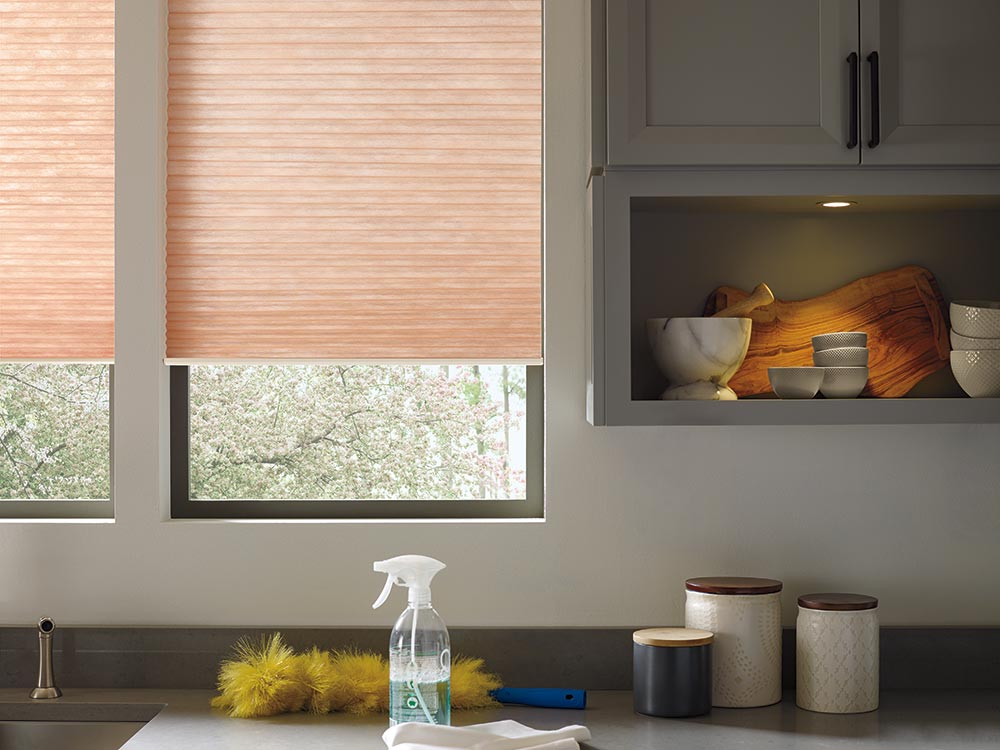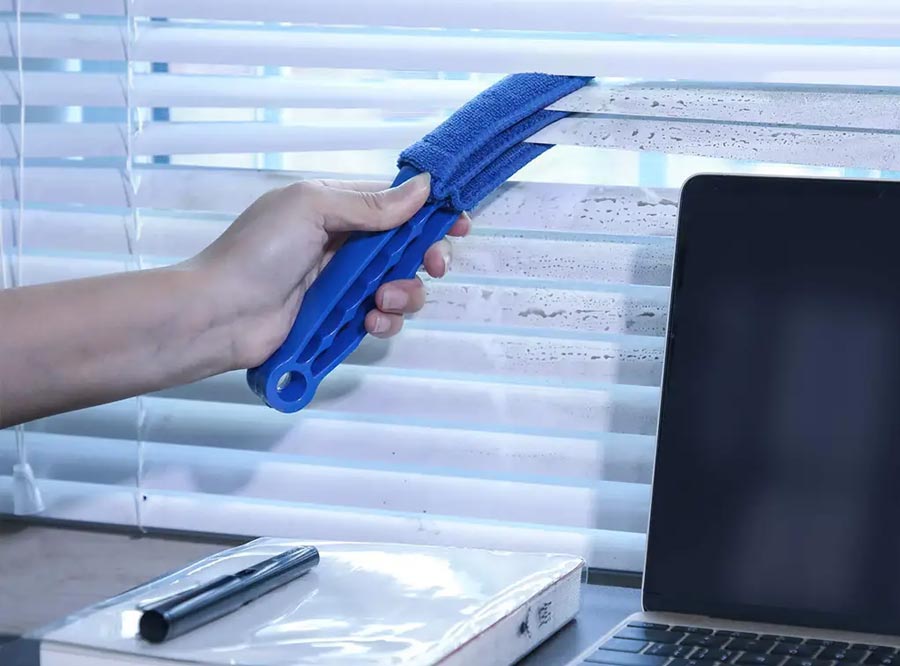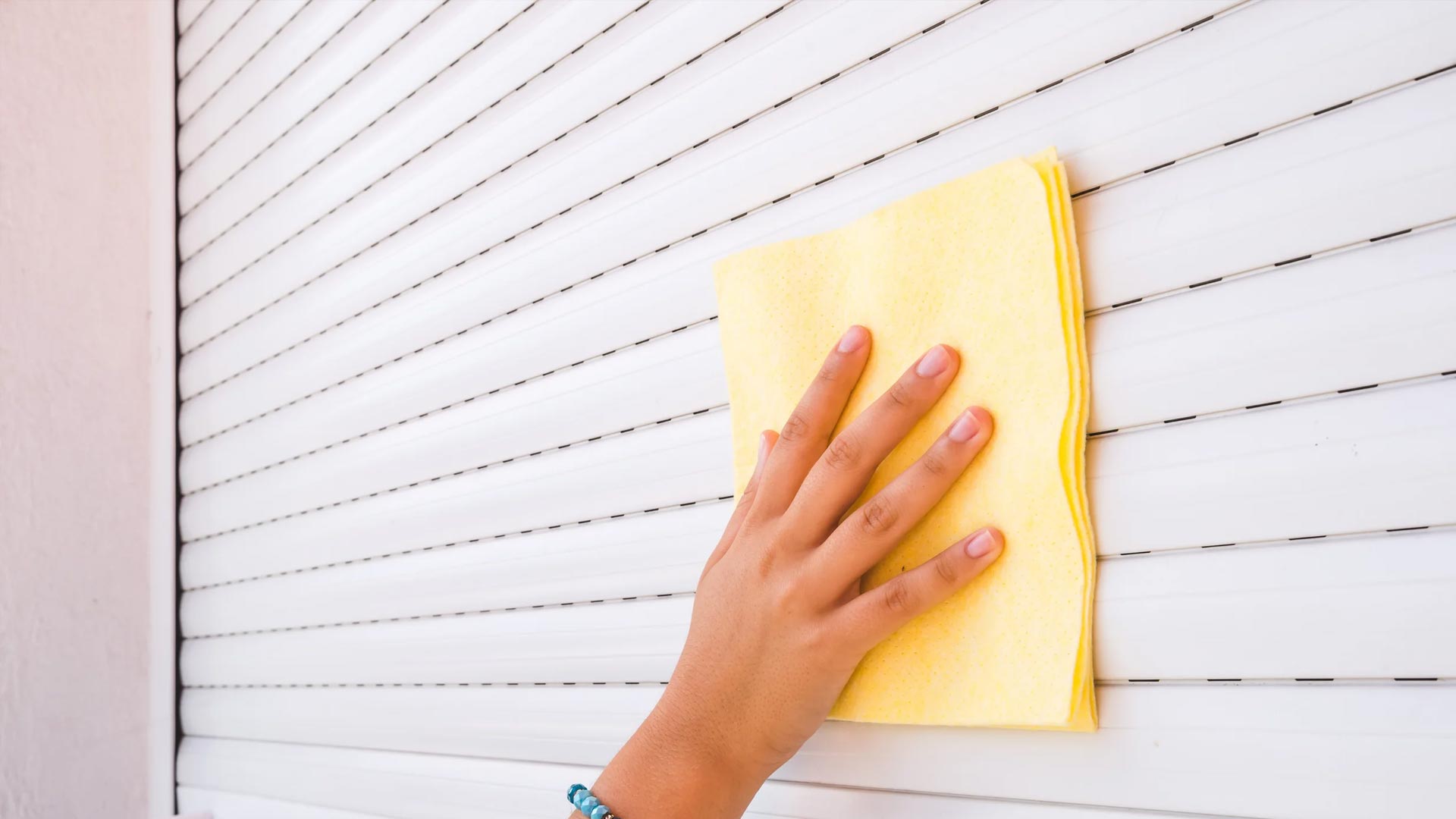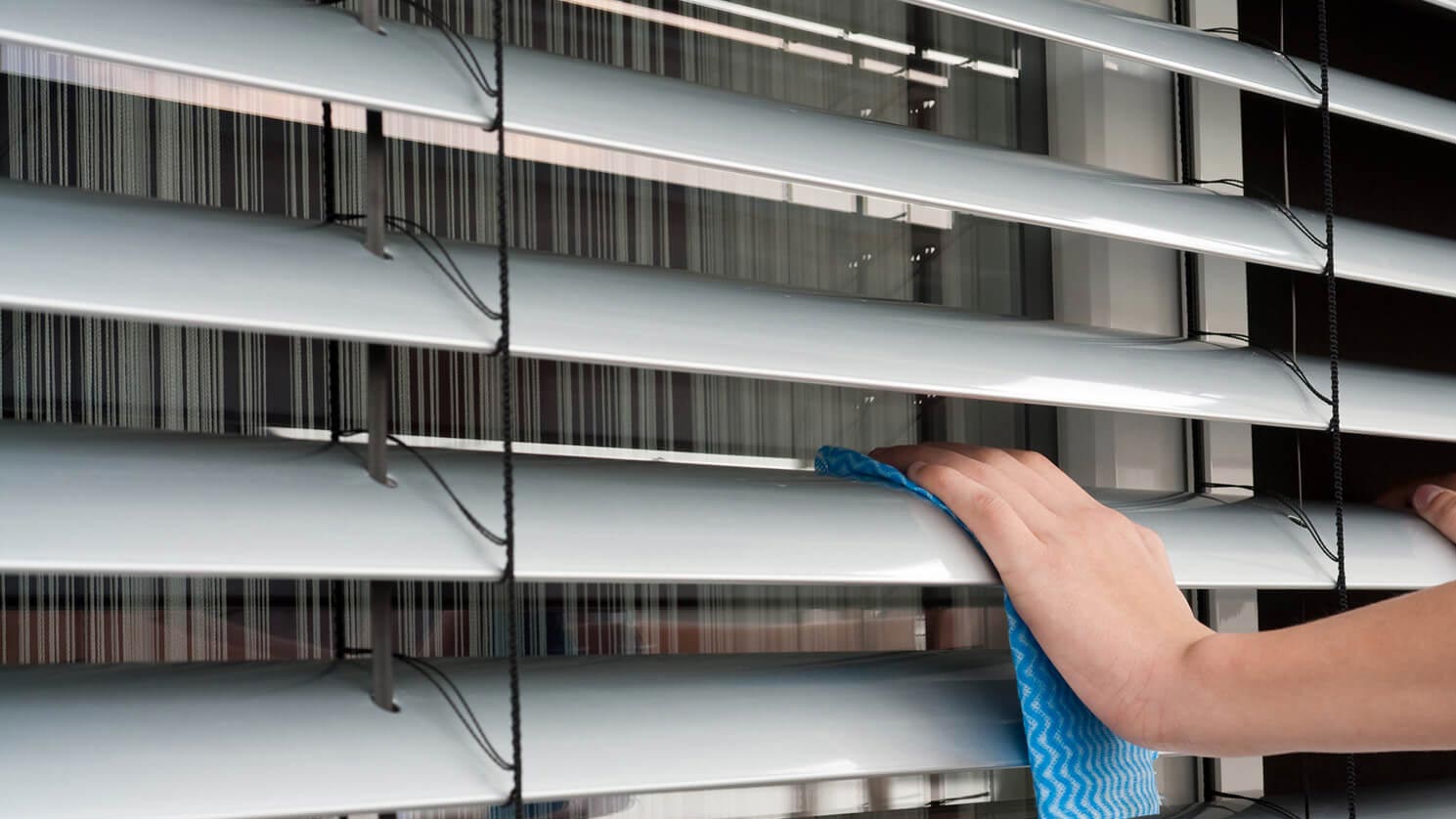Tips for Maintaining Your Window Blinds and Shades
Keep Your Shades and Blinds Clean!
When it comes to cleaning and maintaining blinds and shades, there are two main principles First, that dusting often, though it takes only a few minutes, is the key to keeping window treatments looking like new. Second, when tougher stains are involved, it is important to use the right products and technique to avoid accidental damage. Here we have assembled the most helpful tips and advice for ensuring that your blinds and shades are able to stick around for the long haul.

Maintaining Your Hunter Douglas Products
Care and cleaning your blinds is always important, but to ensure the longest life and the best functionality, you can’t forget to regularly clean your blinds and shades. Simple and quick, many of the Hunter Douglas products just need regular light dusting or vacuuming when necessary. Brush attachments are not recommended for certain fabrics such as sheers, so be sure to read the care and cleaning instructions for your specific product. Aluminum and Vinyl products can usually be cleaned with over the counter cleaning products and a soft cloth.
Dusting and Spot Cleaning
Blinds are rarely stained but will tend to accumulate dust quickly, and for that reason we recommend dusting your blinds at least every two to three weeks. Not only do dusty blinds appear unkempt, they can also cause allergies to flare up inside of the home. Some of our customers have told us that dusting their blinds has turned into a calming, welcoming part of their weekly routines! It is important when dusting blinds to avoid creating friction, which can cause blinds to scratch or even to break. The easiest way to avoid friction is to wipe across each individual blind, avoiding vertical motions, for example, when dusting Venetian blinds, or horizontal moments when dealing with vertical blinds.
As far as what to dust with, there are a range of options starting with specially made dusters, of course. This duster from Quickie, like most, is made with microfiber materials and is small enough to adapt to just about any type of blinds. With most dusters it is possible to clean while blinds are open, which makes for a faster, more convenient process. Otherwise with a cloth you will be wiping over the blinds while they are closed, which is absolutely effective. Avoid wiping with anything made from plastic, and always opt for a microfiber cloth over a typical washcloth, as microfiber is a soft material that will help to avoid tiny scratches from accumulating over time. Rubber sponges are known to work well too!

The most convenient way to dust a set of blinds, however, involves vacuuming with the use of a brush attachment like like this one from EZ Spares, which fits most vacuums and is soft enough to do the job without compromising the materials. Just be gentle, especially with more delicate blinds, and make sure not to scare the dog!
Grease stain, finger marks, and even pet drool can sometimes stain blinds to the point where a simple dusting is not enough. Our advice is to spot clean your blinds with a wet sponge before drying quickly with a cloth. Always be careful when using water and solutions to clean blinds, especially those made of wood.
Shades are less of a hassle when it comes to dusting and spot cleaning, as they respond well to a vacuum with a brush or dusting attachment. We advise our customers to use the lowest setting on their vacuum when cleaning dust from their shades, especially when delicate fabrics like those used to make Roman shades are involved. When spot cleaning shades, only use mild solutions and never rub or wipe the fabric- dabbing with a sponge or a cloth will usually clear a shade of a stain.

Removing Tougher Stains
Unfortunately, sometimes your blinds or shades will require more than just a dusting or spot cleaning. Follow these tips to clean them well, while preserving the longevity of your blinds or shades:
1 – Always dust first, before any water or solutions are brought into the equation. Dust that has accumulated on a blind will attach easily to a wet cloth or sponge and make the process messier than it needs to be.
2 – You can remove stains from most blinds without taking them down from their brackets. This is important because each time a set of blinds is removed, they become a little more worn and prone to damage.
3 – There are plenty of solutions on the market that will clean stains from blinds. Mild dish soaps are extremely popular, and some customers have suggested a mix of vinegar and water for attacking tough stains.
4 – Regardless of what you decide to use as a solution, never spray the blinds directly. Always pour a small amount of solution onto whatever you are using to clean before applying, as this gives you more control over how much is used.
Leave it to the Professionals!
Finally, some blinds or shades are so dirty that they would cause the above methods to fall short. This is often the case with window treatments that have been neglected for a long time. In these cases, it is time to get the professionals involved. Ultrasonic cleaning is an effective process that yields amazing results. Our cleaning professionals performing these cleanings regularly, and making an appointment is easy!
Make sure not to wipe down blinds that are made from bamboo or natural woods, as they usually have rough or jagged edges that will catch or break off. Instead, dab bamboo blinds with a cloth, and avoid water accumulation just as you would with a wooden set of blinds. Thankfully, bamboo blinds do not acquire much dust, making things a little easier.




